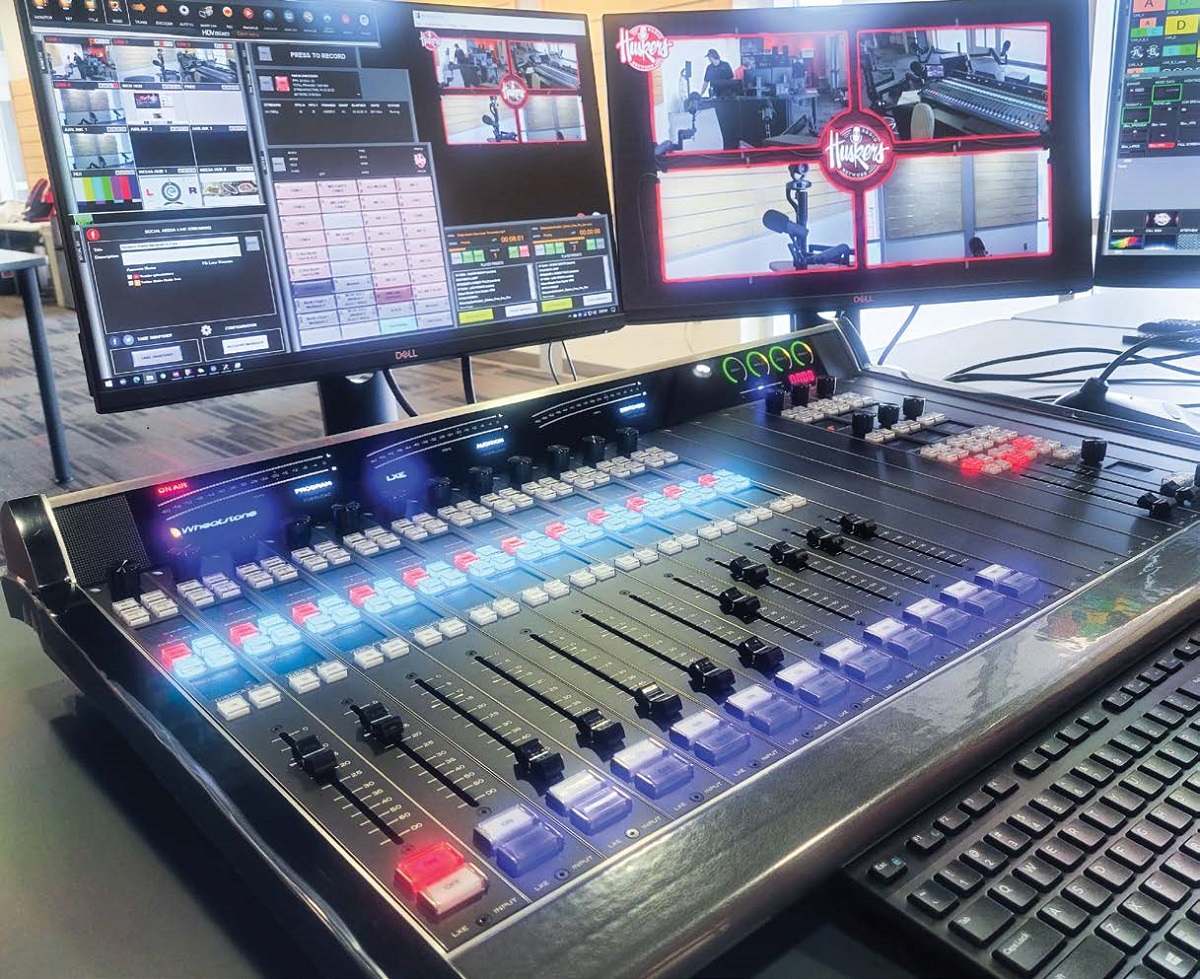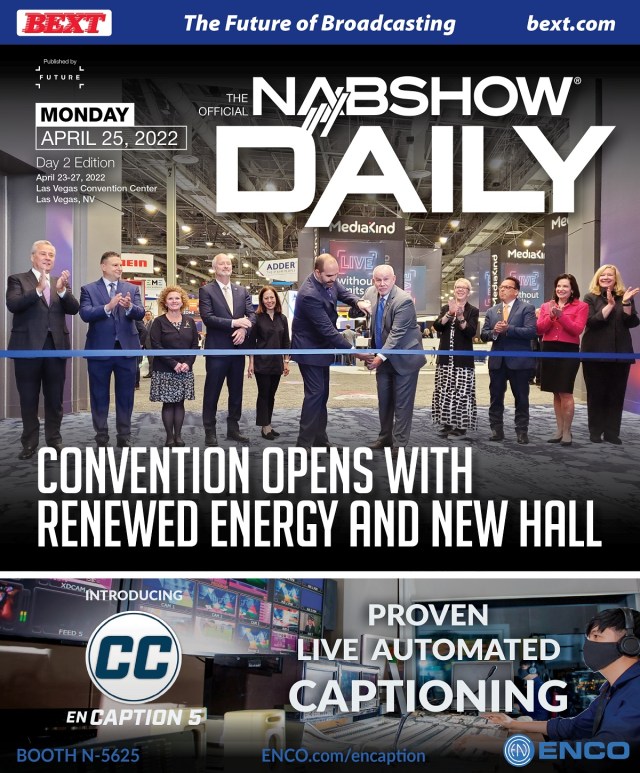
AoIP and other tech supports configurability, remote work and streamlining
By Paul McLane, RADIO WORLD
Radio technologists will tell you that the pandemic accelerated several trends in how studios are designed.
Rooms need to accommodate far more remote contribution and hybrid workflows than before. They must integrate the proliferation of multimedia platforms. And their physical footprints will be smaller, as support infrastructure moves off-site to network centers and the cloud. Nevertheless, physical studios remain a vital part of the radio enterprise, underpinning the creative process while projecting a professional image to clients and the public.
SPORTS MULTIMEDIA COMES IN-HOUSE
Increasingly, managing for radio means managing multimedia platforms.
The Athletic Department at the University of Nebraska became the first major U.S. college athletic department to bring its multimedia operation fully in-house, starting with the 2021–22 season. This included bringing up a statewide radio network on a short timeline.
Director of Broadcast Operations Mike Elliott said the facilities serve the Huskers Radio Network and its dozens of stations, plus internet audio broadcasts on Huskers.com and the Husker App. It supports up to four simultaneous live sports broadcasts to radio affiliates, with up to eight live simultaneous internet radio streams of events and programming. It has the capability to send live video of the network’s “Sports Nightly” talk show to affiliates, plus internet radio and video streams on YouTube, Huskers.com and the app.
The Broadcast Operations Center has five live event production pods. Video can be ingested from any Husker Athletics venue, audio from anywhere on the globe.
Key components include technology from Tieline, Wheatstone, Telos, Barix and RCS.
PERFORMANCE SPACES PROLIFERATE

Music discovery is a goal for many stations so it makes sense that broadcasters are building rooms where bands can perform, audiences can attend and sponsors can amplify their brands.
In September, Nashville Public Radio’s WNXP(FM) and WPLN(FM) opened the Sonic Cathedral, a state-of-the-art video and audio recording studio for producing live music videos as part of NPR Music.
Architectural concepts and design were by V Three Studios. Jeff Schroeder of Schroeder Services was the primary installation engineer.
Among other things, the Sonic Cathedral is equipped with 10 LG HDTVs. Two large TVs on stage are fed by the matrix for logos, sponsor content or other creative. A 75-inch TV can also be used for meetings, conferences or watching football.
“There are five 42-inch TVs at the entrance door that typically will be logo’d but are also being fed by the matrix, so we can put anything on them we want,” Schroeder said. “Most of the TVs are being fed via the OREI HDMI video extenders direct from the matrix — it’s a very cool system.”
“The Sonic Cathedral has greatly impressed musical performers, labels, management companies but, mostly, audiences,” Schroeder said. “We have quickly risen in national recognition for our audio/video performances on NPR Music’s Live Sessions digital portal and locally here in Nashville.”
STUDIO AS QUICK-CHANGE ARTIST


In 2021 Educational Media Foundation, parent of the K-Love and Air1Radio networks, completed a four-studio buildout at its facility in Franklin, Tenn., to support expansion of broadcast content into Nashville, the market where most contemporary Christian music originates.
A clever twist is that the branding visualizations in each studio can be changed with the push of a button to bring up unique “looks” for K-Love, Air1Radio, WTA and AccessMore, along with other settings.
This is accomplished with custom scripts that alter the lighting colors, wall displays and digital displays. The same command brings up the DJ’s personalized settings.
Principal Studio Engineer Bill Jackson led the design and installation, and members of the organization’s Studio Technology, Engineering and IT Teams provided expertise and assistance.
These studios are part of EMF’s nationwide AoIP network. Key components include Axia AoIP infrastructure; and RCS software including Zetta automation.
“Our content creation and delivery systems are designed with talent workflows in mind, not just engineers,” said a member of the EMF team. “This allows for creators to adapt to new environments quickly and be successful in their efforts.”
AOIP WORKS ON A BUDGET

CFAK(FM) at the University of Sherbrooke in Quebec, Canada, moved into two new studios, a good example of putting AoIP to work in a smaller context in the post-COVID world.
CFAK had been working out of one studio in a dorm that lacked air conditioning.
“Following a move to new premises, we had to review the technical architecture,” said Special Projects Manager Jesse Fafard Théorêt. “So, we had to prepare a broadcasting studio as well as a production studio.”

Technical services were provided by Jean-Philippe Vallée of Marketing Marc Vallée, and Jocelyn Blanchette and Nicolas O’Malley of Audiobec Sound & Video.
The studios are built around Wheatstone Audioarts console surfaces with mix engine, equipped with IP audio I/O.
The station uses Jazler SOHO automation and ElectroVoice RE20 and RØDE Procaster microphones.
“For radio stations with a small budget, there is a false belief that the professional equipment offered by the big suppliers in North America is inaccessible or too expensive,” said Fafard Théorêt.


